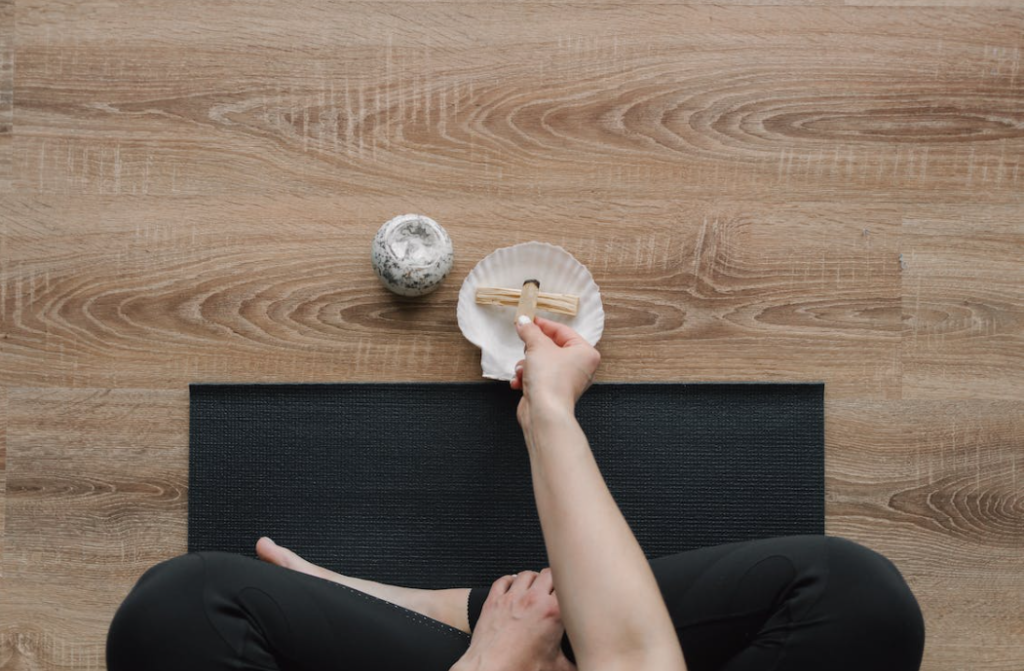Meditation Uses
Learn about the power of meditation and its applications, and how to use them to develop a healthy lifestyle habits.

Selfpause Affirmation App
Download the app to get 1,000’s of affirmation meditations and everything you need to write, record and listen to your own.
Meditation has many uses for the mind and body and is often combined with other healthy lifestyle habits. One study has shown that meditation can reduce high blood pressure. However, further research is needed to find out the exact effects of meditation. In the meantime, meditation can be a beneficial tool for many people. Hypertension is a serious condition that affects half of the U.S. population and affects nearly one billion people worldwide.
Moving meditation

Moving meditation is a type of mindfulness practice that makes use of physical movement. This exercise is beneficial because it helps people shift their focus from their minds to their bodies. It can be practiced indoors on a treadmill, outdoors, or while doing chores. It uses body movement and breathing to focus attention. It can also improve a person’s health by improving fitness levels.
Practicing moving meditation can also be helpful for people with hyperactive imaginations or racing minds. The practice involves focusing on the flow and momentum of activity while walking, jogging, or even doing yoga. This type of meditation is most effective for people whose minds are cluttered with tumultuous thoughts.
Mindfulness meditation

Researchers are finding that mindfulness meditation can reduce stress and improve mental and physical health. It has been shown to improve depression, stress, anxiety, and quality of life. Although this practice may not be for everyone, it has been shown to be an effective way to cope with stressful situations. It may also help people cope with illness.
Mindfulness meditation works by focusing on different objects, including the breath. It can focus on the internal experience of the body or external experiences outside the body. The main goal of this practice is to become more aware of the present moment. In this way, you can experience the moment without worrying about the past or future.
Transcendental meditation

Transcendental meditation has been practiced by millions of people around the world. Many studies have shown that it can help reduce stress and anxiety, as well as improve physical health. It reduces blood pressure, reduces the need for medications for high blood pressure, and decreases heart disease risk. It is suitable for people of all ages and experience levels. People who have emotional and physical difficulties should avoid it, but it can help people with all levels of health problems.
Transcendental meditation is a form of meditation that aims to tap into the natural tendency of the mind to relax and focus. It can improve your concentration, improve your relationships, and improve your productivity.
Loving-kindness meditation

Loving-kindness meditation involves connecting with an intention of happiness. This intention can also be connected with feelings of warmth, friendliness, and love. This intention can be reinforced by focusing on an image of yourself in a warm and loving way. It may also be helpful to imagine loving-kindness towards another person.
When practicing loving-kindness meditation, begin by sitting in a comfortable position. Then connect with your breathing rhythm. Once seated comfortably, imagine an object that embodies loving-kindness. This could be a pet, warm light, favorite tree, or spiritual teacher. Then, repeat this image in your mind.
A good loving-kindness practice can also be a helpful antidote to negative emotions. For example, if you are experiencing ferocious anger or sadness, it may be difficult to observe directly. But with formal practice, you can soften your relationship with these afflictions, making them more palatable and less intractable.
Mantra meditation

Mantra meditation is a powerful way to focus your mind. It is a technique that has been used in India for several thousand years. It is a part of the Ayurvedic tradition of natural health and personal development. It is easy to learn and practice. The benefits of mantra meditation include increased focus and productivity, lessening anxiety and stress, and improved mood.
Mantra meditation uses the sound of a mantra to set the atmosphere for meditation. Unlike consciousness, the sound of a mantra has a soothing effect. The sound of the mantra will allow your body to vibrate and allow you to enter a deeper state of meditation. There are mp3 downloads of these sounds, and you can even use a mobile app to listen to them while you meditate.
Our Top FAQ's
Meditation is a practice that involves focusing the mind on a particular object, thought, or activity to train attention and awareness. It is often associated with mindfulness, which is the practice of bringing one’s attention to experiences occurring in the present moment. There are many potential benefits of meditation, including:
- Reducing stress and anxiety
- Improving focus and concentration
- Managing chronic pain
- Lowering blood pressure
- Improving sleep
- Promoting feelings of calm and relaxation
- Enhancing self-awareness
- Improving overall well-being
There is some evidence to suggest that meditation may work by altering the brain’s structure and function. For example, studies have shown that regular meditation practice is associated with changes in the brain’s prefrontal cortex, which is involved in decision making, problem solving, and emotion regulation. Other research suggests that meditation may also affect the brain’s amygdala, which plays a role in processing emotions and reacting to stress.
Yes, meditation is often used as a way to reduce stress and anxiety. Stress and anxiety are common experiences that can affect a person’s mental and physical health. Meditation can be a useful tool for managing these emotions, as it can help to calm the mind and promote a sense of relaxation.
Studies have shown that meditation can be effective at reducing stress and anxiety. For example, a review of 47 studies found that mindfulness meditation was associated with significant reductions in anxiety, depression, and stress. Other research has found that mindfulness meditation may be particularly effective at reducing stress and anxiety in people with clinical levels of these conditions.
Meditation is often associated with improving focus and concentration, as it involves training the mind to stay present and focused on a particular object, thought, or activity. By regularly practicing meditation, you can develop the ability to maintain focus for longer periods of time and improve your overall concentration.
Studies have found that meditation can be effective at improving focus and concentration. For example, a review of the research on meditation and cognitive function found that mindfulness meditation was associated with improved attention, concentration, and working memory. Other research has also found that mindfulness meditation may be particularly effective at improving focus and concentration in people with attention deficit hyperactivity disorder (ADHD).
Yes, meditation may be used as a complementary therapy to help manage chronic pain and other health conditions. Chronic pain is a common condition that can have a significant impact on a person’s quality of life. Research suggests that meditation may be effective at reducing pain and improving overall well-being in people with chronic pain.
In addition to chronic pain, meditation has also been studied for its potential to help manage a variety of other health conditions. For example, research has found that mindfulness meditation may be effective at reducing symptoms of depression and anxiety, as well as improving sleep and reducing blood pressure. However, it is important to note that meditation is not a replacement for medical treatment and should be used in conjunction with other therapies as recommended by a healthcare provider.
To get started with a meditation practice, follow these steps:
- Find a quiet, comfortable place to sit or lie down.
- Set aside some time for your meditation practice. It can be helpful to start with short sessions and gradually increase the length of time as you become more comfortable.
- Choose a focus for your meditation. This could be your breath, a mantra, a visualization, or something else.
- Sit comfortably with your back straight and your eyes closed. You can sit in a chair with your feet planted firmly on the ground, or you can sit cross-legged on a cushion or mat.
- Take a few deep breaths to help relax your body and clear your mind.
- Focus your attention on your chosen meditation focus. When your mind wanders, gently redirect your attention back to your focus.
- End your meditation when you feel ready. You can open your eyes and take a few deep breaths to help ground yourself before getting up.
It’s important to be patient and kind to yourself as you begin your meditation practice. It’s normal for the mind to wander, and it may take some time to develop the ability to focus and stay present. With regular practice, you’ll likely find that it becomes easier to focus and you feel more relaxed and centered.
